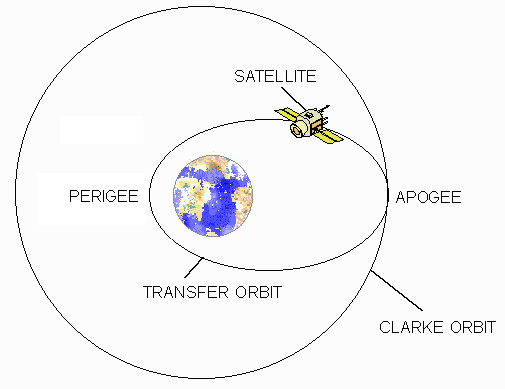
Figure 7: The Elliptical Transfer Orbit
The Launch Phase
During the launch phase, the launch vehicle places the satellite into the transfer orbit--an eliptical orbit that has at its farthest point from earth (apogee) the geosynchronous elevation of 22,238 miles and at its nearest point (perigee) an elevation of usually not less than 100 miles as shown below in Figure 7.
The Orbit Injection Phase
The energy required to move the satellite from the elliptical transfer orbit into the geosynchronous orbit is supplied by the satelliteís apogee kick motor (AKM). This is known as the orbit injection phase.

Expendable rockets for communication satellites have three stages. The first stage contains several hundred thousand pounds of a kerosene/liquid oxygen mixture, plus a number of solid fuel rocket boosters that produce a tremendous display of flame--and ear splitting noise--as the rocket lifts off the pad. It raises the satellite to an elevation of about 50 miles. The second stage raises the satellite to 100 miles, and the third stage places it into the transfer orbit. After the satellite is placed in its transfer orbit, the rocketís mission is complete, and its remnants fall to earth. The satellite is placed in its final geosynchronous orbital slot by the AKM, which is fired on-command while the satellite is at the apogee of its elliptical transfer orbit. Figure 8 shows a picture of the Atlas IIAS expendable satellite launch vehicle.


